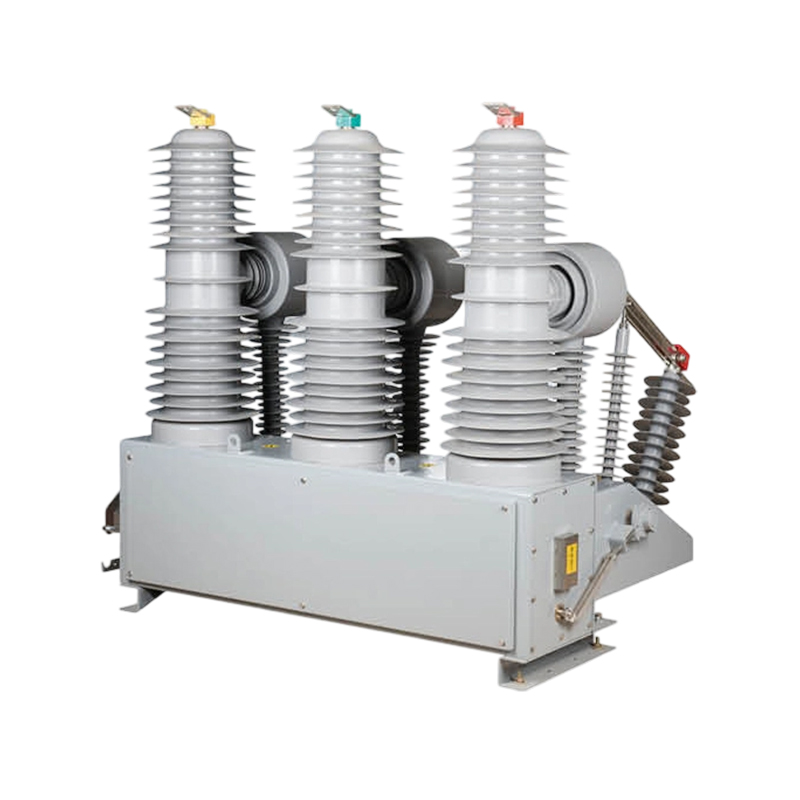Industry News
Operating Features of Medium-Voltage Outdoor Vacuum Breakers
An outdoor vacuum type circuit breaker is an essential electrical device designed to interrupt current flow in overhead distribution systems and outdoor substations. It operates using vacuum interruption technology, ensuring safe disconnection during faults or maintenance operations in medium-voltage power systems.
The core function of a vacuum circuit breaker is to interrupt current when a fault occurs, such as a short circuit or overload. When installed outdoors, the device must also withstand environmental exposure, including rain, dust, ultraviolet radiation, and wide temperature variations. The vacuum interrupter, placed within an insulated chamber, is the critical component responsible for extinguishing the electrical arc formed during current interruption.
An Outdoor Vacuum Type Circuit Breaker is a robust electrical device designed to handle the demands of outdoor environments. It features a durable construction with a cast steel casing and stainless steel components that provide good resistance to corrosion and environmental stress. The vacuum interrupter within the breaker ensures reliable operation by containing the arcing process in a vacuum, which smalls wear and tear on contacts.
Outdoor vacuum type circuit breakers are typically mounted on poles or steel frames and include the following key components:
Vacuum Interrupter: The sealed unit where the arc is interrupted. It contains fixed and moving contacts that separate under fault conditions.
Insulating Structure: Often made from epoxy or porcelain, these components provide electrical insulation and mechanical support.
Operating Mechanism: This may be spring-loaded or motor-driven, converting stored mechanical energy into movement to open or close the contacts.
Enclosure: The device is usually protected by a weather-resistant casing or support structure designed for outdoor use.
Control Box (optional): In automated systems, an external or attached control unit may provide remote operation, protection coordination, and monitoring.
Outdoor vacuum circuit breakers are widely used in:
Rural and urban distribution networks: Protecting feeders and branches in overhead line systems.
Substations: Serving as sectionalizing or feeder breakers for incoming and outgoing power lines.
Renewable energy installations: Protecting medium-voltage output circuits from wind farms and solar power systems.
Industrial plants: Supporting outdoor switching requirements in facilities with medium-voltage systems.
Their compact footprint and high reliability make them suitable for areas with space constraints or environmental challenges.
Vacuum circuit breakers are known for their quick operation, low arc energy, and small contact wear. Their operation includes:
Arc Interruption: Occurs within milliseconds as contacts separate in the vacuum.
Current Limiting Capability: In specific designs, they can small fault currents’ peak values.
Reclosing Options: Some units support automatic reclosing after a brief pause, improving service continuity in case of transient faults.
The absence of oil or gas also reduces environmental and maintenance concerns.
Outdoor installation requires securing the breaker on a stable platform or pole, ensuring proper clearance and grounding. Wiring should be done according to system voltage levels and connection standards.
Maintenance typically involves visual inspections, contact resistance measurements, and operational checks of the mechanism. Since the vacuum interrupter is sealed, it requires small internal servicing.
Outdoor vacuum type circuit breakers provide a practical and efficient solution for medium-voltage power control in external environments. Their arc-interruption technology, robust insulation, and outdoor-ready design make them suitable for various applications, from utility networks to renewable energy projects.

Next
Structure and Function of Integrated Photovoltaic Panel Boxes
<p>An <a href="/product/photovoltaic-complete-box/" target="_blank">...
View More- PRODUCTS
- New Energy Power Distribution Equipment
- Box Type Substation
- Cable Branch Box/Switch Station
- High Voltage Switchgear
- Low Voltage Switchgear
- Engineering Vacuum Circuit Breaker
- New Energy Vehicle Floor Charging Pile
- Commercial Energy Storage
- Photovoltaic Complete Box
- High Voltage Arrester
- INFORMATION
-
-
Phone+86-13868788848
+86-13356188725 -
Tel+86-0577-88810567
-
E-mail
-
AddNo. 59, Youyi Road, Xinguang Industrial Zone, Liushi Town, Yueqing City, Zhejiang, China
-
- ENQUIRE WITH US
Photovoltaic Module Manufacturer




 English
English  中文简体
中文简体  русский
русский  Español
Español  عربى
عربى 


